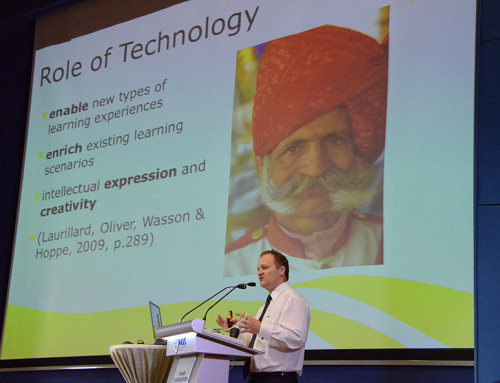At the 2011 ascilite conference in Hobart I conducted a workshop on the Good Practice Report: Technology-enhanced Learning and Teaching that Gordon Suddaby, Natasha Hard and myself completed for the Australian Learning and Teaching Council.
The workshop focussed on three key questions: How do we recognise Good Practice in technologically-enhanced learning and teaching? How do we communicate/disseminate Good Practice in technologically-enhanced learning and teaching? and How do we integrate Good Practice into learning and teaching? These were somewhat rhetorical questions as most would agree.
The focus of the workshop was an evaluation of 25 complete projects and 8 ongoing projects. The first step was to define technology-enhanced learning. Laurillard, Oliver, Wasson & Hoppe (2009) suggest that the “role of technology
- A focus on learning design allows academics to model and share good practice in learning and teaching
- Authentic learning provides a means of engaging students through all aspects of curricula, subjects, activities and assessment
- Successful academic development focuses on engaging academics over sustained periods of time through action learning cycles and the provision of leadership development opportunities
- Engaging teaching approaches are key to student learning
- Technology-enhanced assessment provides flexible approaches for academics to provide feedback to students
- Integrating technology-enhanced learning and teaching strategies across curriculum, subjects, activities and assessment results in major benefits to the discipline
- Knowledge and resource sharing are central to a vibrant community of practice
- Academics require sophisticated online teaching strategies to effectively teach in technology-enhanced higher education environments
- Academics need a knowledge of multi-literacies to teach effectively in contemporary technology-enhanced higher education
- Exemplar projects focused on multiple outcomes across curricula integration, sustainable initiatives, academic development and community engagement.
Overall, it was a great workshop with around 12 people in the ascilite community. It was interactive and feedback was generally positive. A number of questions were generated from the discussion:
- Who decided the topics for the 11 Good Practice Reports?
- Who decided the 33 projects that were included in the technology-enhanced learning and teaching report?
- What was the threshold for inclusion/exclusion of individual projects under each of the outcomes?






Nice post Mike! I totally agree about the importance of good approaches to design but then I would wouldn't I?!!
I'm with Grianne on this one. A very useful post…but, as a long time supporter of good learning design, an addict of Action Learning and a champion for student engagement, I too may already be singing in this choir.
I'll be using your report as a reference point often.
Thanks
Lindy
Thanks Lindy. The outcomes are useful as they provide an evidence-based approach for technology-enhanced learning and teaching. We also designed the report to be useful for academics who want a brief overview through to detail on each outcome area.